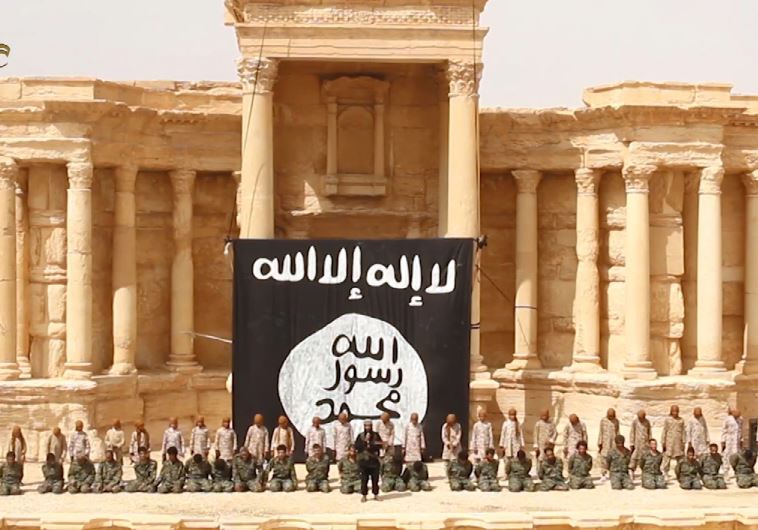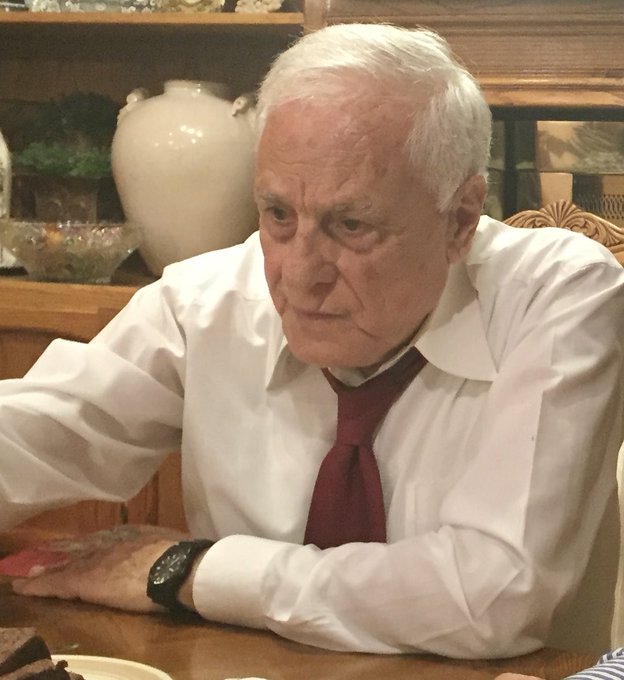Analysis: Is ISIS here to stay in the Middle East?
ROBERT SWIFT/ THE MEDIA LINE/J.Post/08/27/2015
The Islamic State (ISIS) has already outlived predictions of its early demise offered by some US military officials. The Islamist group has survived the near fatal assassination of its leader Abu Bakr al-Baghdadi by airstrike earlier this year and has continued its voracious march across Iraq and Syria virtually unimpeded, holding on to territory roughly equal to the size of Belgium, despite the reported deaths of some 15,000 of its fighters who were killed by US-led air strikes.
That the group has been targeted by the coalition of more than a dozen militaries including the US, France, the UK, Saudi Arabia and Jordan, has led some commentators to suggest that a possible future exists in which the Islamic State is a permanent part of the geography of the Middle East.
“First, the pressure is from the air, and air campaigns never succeed,” James M. Dorsey, a senior fellow at Nanyang University in Singapore, with a focus on ethnic and religious conflicts, told The Media Line. “(Secondly), the pressure is economic and the effects of economic embargoes are limited – look at Iran,” Dorsey added. The well-financed Islamic State is likely to be able to float itself on funds from black market oil and antiques sales despite international isolation. If airstrikes and financial blockades are not enough to end the radical Sunni group, then the unpalatable and unlikely option of ground forces remains.
But while a return of US troops to Iraq would be the scenario most threatening to ISIS, any gains from this would be short lived and could lead to a backlash, Dorsey said. And since this is not likely to happen, then it must be concluded that ISIS could persevere, Dorsey argued. “They have lost a little territory but expanded elsewhere. Personnel losses (from airstrikes) have not put a dent in them, they are able to take it,” he opined.
The increasing reality of an established (read permanent) ISIS is a growing topic of discussion in Israel, where security and defense experts postulate Israel’s position in a changed Middle East.
Israel’s borders have been identified as potential weak points in the defense of the nation. Yoram Schweitzer, head of the Program on Terrorism and Low Intensity Conflict at the Institute for National Security Studies, told The Media Line that in the North, although ISIS is not directly on Israel’s border, the Al-Nusra Front, whom Schweitzer described as being “cut from the same cloth as ISIS” – are. In the South, the Sinai Province, a particularly dangerous and effective terrorist group responsible for killing hundreds of Egyptian police officers and soldiers, has previously targeted Israel.
But it is the threat posed to Jordan that Schweitzer viewed as being of greatest concern to the Jewish state. If the Jordanian government’s survival is threatened, Israel would risk losing a strategic ally, Schweitzer said, adding the caveat that for the time being the Hashemite Kingdom’s security apparatus seems up to its task.
Such a scenario might keep Israel alert, but appeared unlikely to happen in the foreseeable future, said Schweitzer, who argued that ISIS is unlikely to be able to maintain its territorial hold and would “almost definitely not” become a functioning state. Iran would never let the group take Baghdad, and even if Assad falls, at least one of the super powers would step in to prevent a caliphate in Syria, he explained. “There are simply too many different groups opposed to the radical Sunni organization for it to last.”
“People are (already) discovering that it is only an ideology of dictatorship and totalitarianism, I don’t think ISIS will remain for a long time,” Abdul Ibrahim, of the political science department at Birzeit University in the West Bank, told The Media Line. “People are moving back to the idea of an Iraqi state and putting aside sectarianism as a direct result of the actions of ISIS,” Ibrahim said. Similar events are happening in Lebanon following protests over trash collection, he added.
For the time being, the presence of the Islamic State has benefited Israel, the political scientist argued. “They can say that ‘we are angels’ and that ISIS is the alternative – that ‘we do nothing to the Palestinians in comparison to what happens under ISIS,’” Ibrahim said.
But even if the Islamic State were not to emerge as a functioning state, or if it were to be effectively destroyed, the Middle East’s woes could continue. ISIS is a symptom, not the problem in the Middle East, according to James M. Dorsey. “Destroying them is not a solution, it is a short term fix.”He explained that the region has been in transition since 2011 and this is continuing, with the Islamic State just one single expression of this. Regimes that placed their own survival over the needs of their citizens used sectarianism to divide opposition while violently quashing peaceful calls for reform, leading to the emergence of groups like ISIS, Dorsey explained. If Islamic State is to be vanquished, people might prefer to have it around again after they see what replaces it, Dorsey explained.
*The Israeli Defense Ministry declined to comment on the topics addressed in this article.
Why did it take Saudi Arabia 20 years to catch Khobar Towers bomber?
Al Monitor/August27/15
After a 20-year manhunt, the Saudis have captured the man behind a deadly 1996 terrorist attack on American airmen in the kingdom. The case will raise questions about Supreme Leader Ayatollah Ali Khamenei’s role in the murder of 19 US service members.
Ahmed Ibrahim al-Mughassil is a Saudi Shiite who masterminded the June 25, 1996, attack on an American military barracks in Khobar, Saudi Arabia. According to Saudi and Pakistani press accounts, Mughassil was found in Beirut and has been transferred to the kingdom. Nineteen US Air Force personnel were killed at Khobar and 372 were wounded in the attack. The FBI put a $5 million bounty for information leading to his arrest years ago. The press accounts do not provide details on when and how the Saudis apprehended Mughassil, and the Saudi government has provided no comment or confirmation as yet. Some Lebanese accounts say Mughassil was caught just two weeks ago in Beirut. Saudi authorities have been unwilling to comment publicly on the Khobar attack since it occurred in 1996, but they privately have long pointed to Mughassil and his Iranian handlers as the perpetrators.
Born in 1967 in Qatif in Saudi Arabia’s Eastern Province, Mughassil joined Saudi Hezbollah and became its military commander. Saudi Hezbollah, also called Hezbollah al-Hejaz, was very close to Lebanon’s Hezbollah and the Iranian Revolutionary Guard Corps (IRGC) in the 1990s. Saudi Hezbollah operatives recruited in Eastern Province around Qatif were trained in camps in Lebanon and Iran by Hezbollah and IRGC experts. In the 1990s, Mughassil operated from the Sayyida Zeinab mosque in Damascus, Syria. A Shiite pilgrimage site, the mosque was and still is a stronghold of the Iranian presence in Syria. Beginning in 1994, Mughassil began surveilling the Khobar Towers facility and the Dhahran air base nearby. It was then the main US Air Force base for no-fly zone operations over Iraq. According to a 2001 Department of Justice indictment, Mughassil made periodic visits to Dhahran to oversee the surveillance and recruit local Saudi Shiites for the attack. The Iranians instructed him to identify US facilities in the kingdom, according to the indictment.
As deputy assistant secretary of defense at the time, I arrived at the Khobar bomb site a few hours after the attack. The scene was devastating. Mughassil had driven a truck containing the bomb up to a protective wall near the barracks. He then remotely detonated the bomb. It was the equivalent of 20,000 pounds of TNT, larger than the bomb used to blow up the Marine barracks in Beirut. In addition to the Americans killed and wounded, dozens of Saudis and South Asian guest workers were injured. Mughassil allegedly fled to Iran immediately after the attack.
In my meetings with senior Saudi officials in Dhahran in the days immediately after the attack, they pointed the blame at Saudi Hezbollah. It became clear the Saudis had a great deal of information on the group and had probably foiled an earlier bomb attack without telling Washington. The Saudis were certain it was not the work of Osama bin Laden. They knew Mughassil was the mastermind from the start. Throughout the investigation of the plot, the Saudis were worried Washington would use the incident to attack Iran. Then-Crown Prince Abdullah bin Abdul-Aziz Al Saud, who was the de facto regent with King Fahd incapacitated by a stroke, did not want to start another Gulf war and face Iranian retaliation against the kingdom. Interior Minister Prince Nayef bin Abdul-Aziz Al Saud was even more determined not to cooperate with the American investigation. It would expose weaknesses in Saudi security and his ministry.
President Bill Clinton chose a different means of retaliation. IRGC and Iranian intelligence officers serving around the world under cover were “outed” by American intelligence. Clinton’s counterterrorism adviser Richard Clarke later wrote that the outing operation probably convinced Iran not to target American facilities for the rest of the 1990s. In June 1999, the Clinton administration informed Tehran that it had credible information that the IRGC and Lebanese Hezbollah were involved in the attack. The sultan of Oman delivered the message to the Iranians at Clinton’s request. The Iranians denied any involvement. They also promised no further attacks would occur. The 2001 Department of Justice indictment indicates the bomb was built by a member of Lebanese Hezbollah. The indictment also says Mughassil was in close contact with Iranian officials throughout the planning and execution of the attack. The officials were not indicted nor named.
In 2006, a federal court awarded $254 million in damages to the families of some of the airmen killed in Khobar. The court ruled Iran had been responsible for the attack, that the bomb was built in an IRGC camp in Lebanon and that Khamenei had approved the operation.
Mughassil was the senior Saudi Hezbollah official interacting with the Iranians. He would know exactly who was involved in the plot in Tehran. If he cooperated (a huge and unlikely if) he could establish the chain of command. In the more likely case that Mughassil’s interrogation is selectively leaked to the media, it could still pose embarrassing and dangerous questions about Khamenei’s role. The news of Mughassil’s apprehension will also raise questions about how the 20-year-old manhunt broke now. The timing is certain to strike many as suspicious. Is the news intended to remind Americans about Iran’s long history of involvement in terrorism just as the congressional debate on the Iran nuclear deal reaches its peak?
The Saudis are very concerned that the deal will end Iran’s isolation and strengthen its capacity for regional mischief. Riyadh has been fairly quiet about its concerns, but it is deeply engaged in a proxy war with Iran in Yemen. Even if the timing of Mughassil’s arrest is a coincidence, the decision to leak the news is probably intended to influence the debate. Saudi sources also say King Salman bin Abdul-Aziz Al Saud will visit Washington early next month. Mughassil’s arrest is certain to be a major issue for the visit and prompt questions about US access to his interrogation in the kingdom and possible extradition to the United States. The king’s visit may be the denouement of the Iran debate.





















